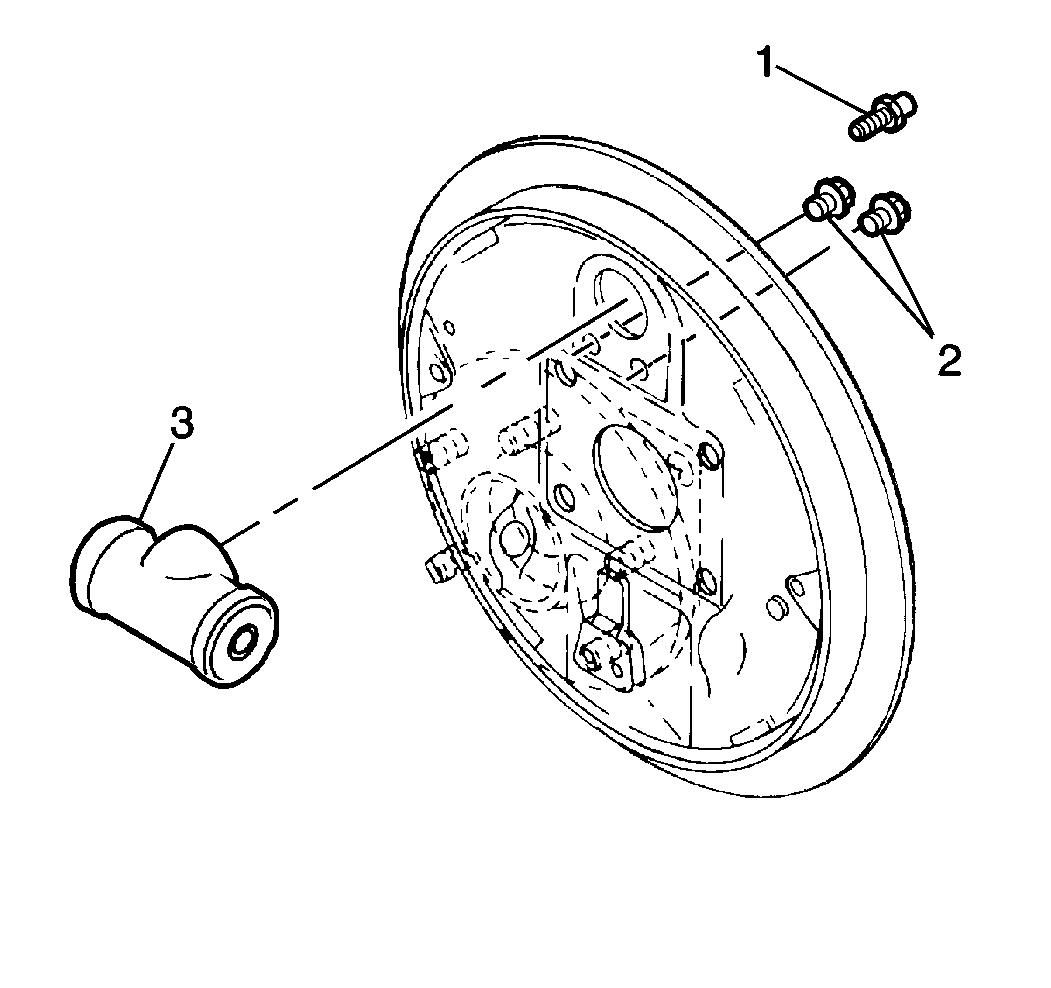For 1990-2009 cars only
Removal Procedure
- Raise and suitably support the vehicle. Refer to Vehicle Lifting and Jacking in General Information.
- Remove the brake drum and components. Refer to Brake Drum Replacement , and Brake Lining Replacement .
- Disconnect the brake pipe from the wheel cylinder.
- Disconnect the park brake cable from the backing plate.
- Remove the hub and bearing bolts. Refer to Rear Wheel Bearing and Hub Replacement .
- Remove the backing plate.
Installation Procedure
- Install the backing plate.
- Install the hub and bearing with bolts. Refer to Rear Wheel Bearing and Hub Replacement
- Connect the park brake cable to the backing plate.
- Connect the brake pipe to the wheel cylinder. Tighten the brake pipe fitting (tube nut).
- Install the brake drum and components. Refer to Brake Drum Replacement , and Brake Lining Replacement .
- Bleed the brake hydraulic system. Refer to Hydraulic Brake System Bleeding .
- Adjust the service brakes. Refer to Drum Brake Adjustment .
- Adjust the parking brake. Refer to Park Brake Cable Inspection .
- Lower the vehicle.
- Check for proper brake operation.

Notice: Use the correct fastener in the correct location. Replacement fasteners must be the correct part number for that application. Fasteners requiring replacement or fasteners requiring the use of thread locking compound or sealant are identified in the service procedure. Do not use paints, lubricants, or corrosion inhibitors on fasteners or fastener joint surfaces unless specified. These coatings affect fastener torque and joint clamping force and may damage the fastener. Use the correct tightening sequence and specifications when installing fasteners in order to avoid damage to parts and systems.
Tighten
Tighten the brake pipe fitting to 15 N·m (11 lb ft).
